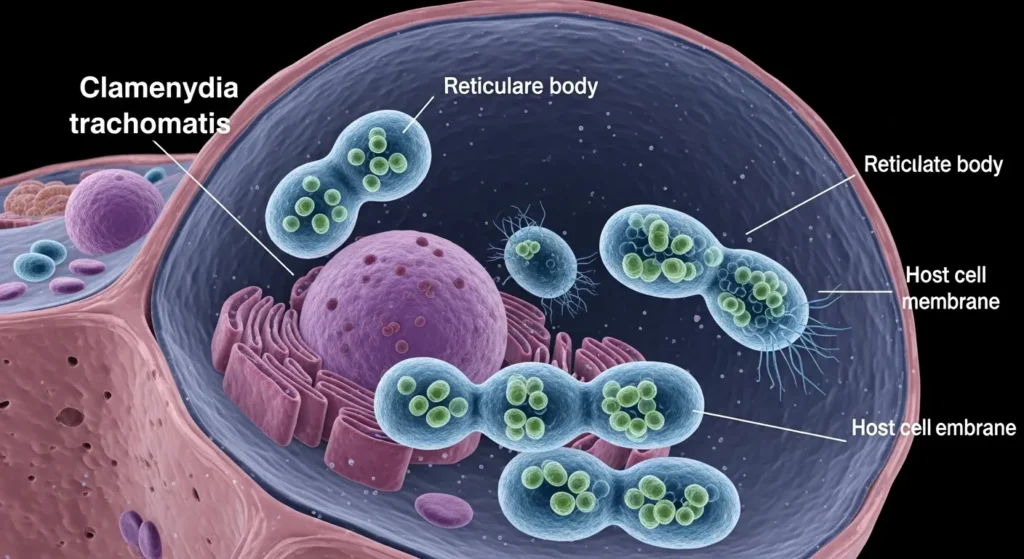If you’ve noticed thinning or shedding and are wondering can chlamydia cause hair loss, you’re not alone. While chlamydia itself doesn’t directly cause baldness, the infection, its treatment, or related complications may influence hair health in indirect ways.
In this article, you’ll learn the real connection between STIs and hair loss, which infections are true culprits, recovery timelines, and expert-backed advice. By the end, you’ll feel informed, reassured, and equipped to take the next step toward healthy hair and overall well-being.
Understanding Chlamydia and Its Common Effects

What Is Chlamydia?
Chlamydia is one of the most common sexually transmitted infections (STIs) worldwide. It is caused by the bacterium Chlamydia trachomatis and spreads through unprotected sexual contact. Many people with chlamydia experience no symptoms, which is why regular testing is important.
Typical Symptoms and Treatment
When symptoms occur, they may include:
- Burning sensation during urination
- Abnormal genital discharge
- Pelvic or testicular pain
Treatment usually involves antibiotics such as azithromycin or doxycycline, which effectively clear the infection when taken as prescribed. Left untreated, chlamydia can lead to complications like pelvic inflammatory disease (PID), infertility, or chronic pain.
Does Chlamydia Directly Cause Hair Loss? What the Evidence Says
Scientific Consensus
Current medical evidence shows that chlamydia does not directly cause hair loss. Unlike syphilis or advanced HIV, there is no known mechanism by which chlamydia attacks hair follicles or disrupts the hair growth cycle.
Possible Indirect Mechanisms
However, some indirect factors may contribute to hair thinning in individuals with chlamydia:
- Stress and inflammation: Chronic infections can create physical stress on the body, sometimes triggering telogen effluvium (temporary shedding).
- Antibiotic side effects: Certain medications used to treat STIs have rare associations with nutrient depletion or hair changes.
- Secondary complications: If chlamydia progresses to PID or other inflammatory conditions, the overall immune response may impact hair health.
Other STIs That Can Trigger Hair Loss
While chlamydia is not a direct cause, some sexually transmitted infections are known to cause noticeable hair changes.
Syphilis – “Moth-Eaten” Alopecia
- Secondary syphilis may lead to patchy, uneven hair loss often described as “moth-eaten alopecia.”
- This pattern appears on the scalp, beard, or eyebrows.
- Hair often regrows after antibiotic treatment, typically within 3–6 months.
HIV and Hair Loss
- HIV does not directly damage hair follicles but can trigger telogen effluvium due to immune suppression.
- Opportunistic infections, stress, and antiretroviral therapy may contribute to diffuse thinning.
Other Causes (Less Common)
- Pubic lice: Localized hair loss due to scratching or treatment.
- Trichomoniasis: Rarely associated with indirect shedding through inflammation.
Treatment-Related Hair Loss – Is It the Antibiotic?
Azithromycin and Hair Thinning
Azithromycin, commonly prescribed for chlamydia, is not widely associated with hair loss. However, long-term or repeated use of antibiotics can sometimes disrupt gut microbiome balance and affect nutrient absorption, indirectly influencing hair health.
Other Medications
Historically, older medications for infections or HIV treatments had stronger links to hair changes. Today, modern antibiotics are generally safe, and hair loss as a side effect is considered rare.
Pro Tip: If you notice hair thinning after starting a new medication, discuss it with your doctor. Never stop antibiotics without medical guidance.
When to Consult a Professional – Signs, Diagnosis & Next Steps
Symptoms to Watch
Seek professional advice if you experience:
- Patchy or sudden hair loss
- Scalp inflammation or scaling
- Persistent shedding beyond 3 months
Diagnostic Process
Doctors may recommend:
- Trichoscopy or scalp biopsy to analyze follicles
- Blood tests to screen for STIs such as syphilis or HIV
- General labs (iron, vitamin D, thyroid) to rule out other causes
Why It Matters
Addressing the root cause of hair loss is critical. Treating the infection alone may not be enough if the shedding is due to stress, medication, or other deficiencies.
Recovery Outlook & Timeline
Syphilitic Alopecia Recovery
Studies show most patients with syphilis-related hair loss regrow hair within 3–6 months after treatment.
Indirect or Stress-Related Shedding
If hair loss stems from stress, inflammation, or antibiotics, regrowth may take several months once the trigger is removed. Supportive care, such as nutrition optimization, gentle scalp care, and stress management, can improve outcomes.

Frequently Asked Questions (FAQs)
Can chlamydia cause your hair to fall out?
No. Chlamydia does not directly cause hair loss, though stress, antibiotics, or complications may indirectly affect hair health.
Could antibiotics for chlamydia cause hair thinning?
It’s rare. Azithromycin and doxycycline are generally safe, but in unusual cases, prolonged use may influence nutrient absorption, leading to shedding.
Which STIs actually cause hair loss?
Syphilis is the most common, followed by HIV (indirectly). Others, like pubic lice or trichomoniasis, are rare causes.
How long does it take for hair to grow back after treatment?
Hair usually regrows within 3–6 months if the underlying STI or trigger is properly treated.
Should I get tested for STIs if I notice hair loss?
If you suspect exposure or have other symptoms, yes. A doctor may recommend syphilis, HIV, and chlamydia testing.
Next step
If you’re experiencing unexplained hair loss after an STI diagnosis or treatment, don’t ignore it. Early evaluation ensures you address both your health and hair concerns effectively.
Book a confidential consultation with Dr. Rana Irfan in Islamabad today to receive expert diagnosis, evidence-based treatment, and personalized guidance for both hair recovery and overall sexual health.
